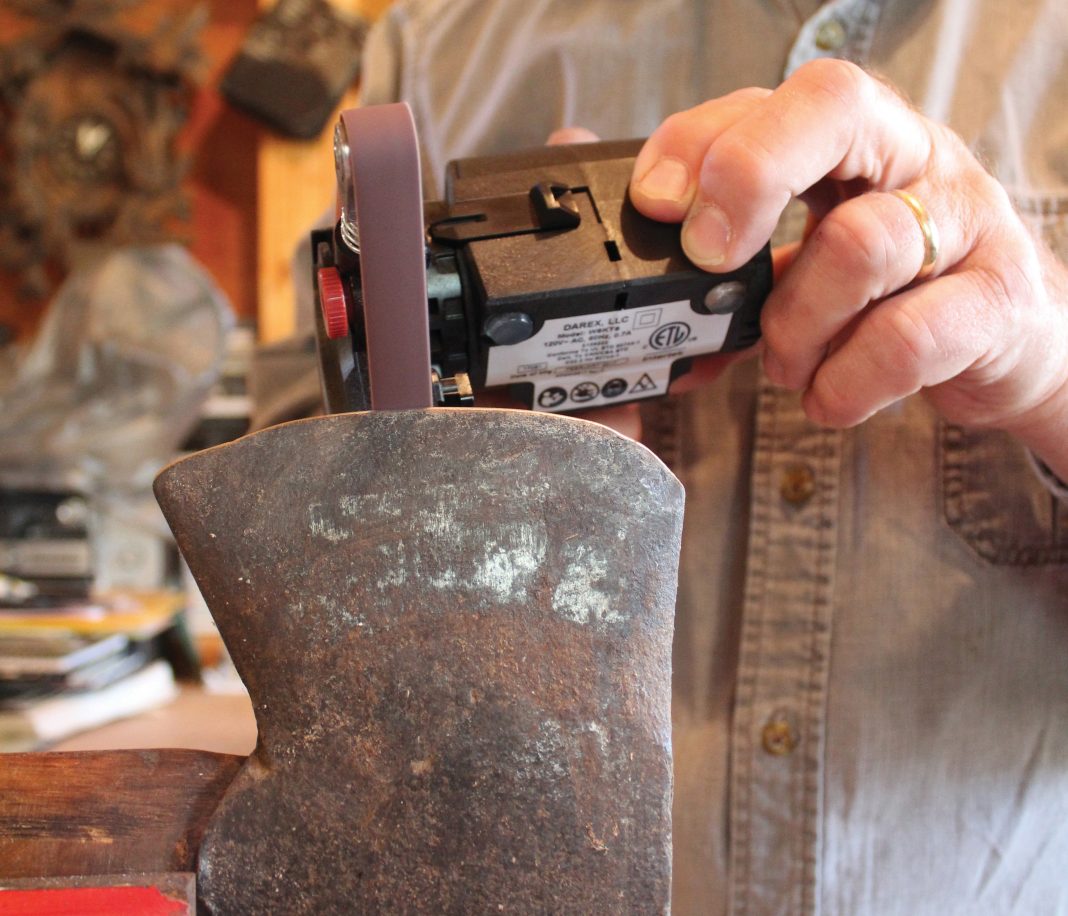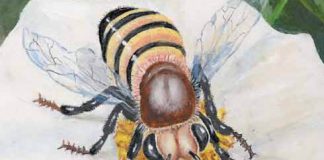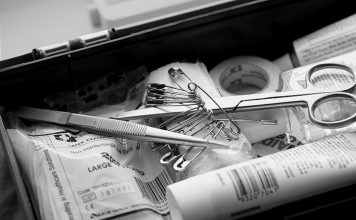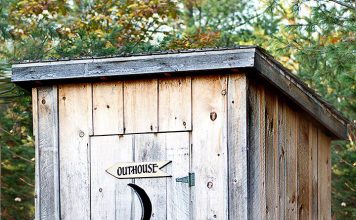By Dana Benner
There are some things on the homestead that we take great care of, like firearms, knives and machinery. Then there are those things that don’t get the attention that they should, such as shovels, hoes, mauls and axes. Such is not the case around the Benner homestead. Hand tools are our lifeblood and we can’t afford to be without them. Oh sure, you’ll find rust on some of our axes, but that is because many of them are barn finds, but after some care, the cutting edges are razor sharp.
There is an adage that goes, “A sharp knife is a safe knife” and the same can be said for garden tools. A dull axe or a splitting maul can do some serious damage if it bounces off of a log because it is not sharp enough to bite into the wood. Have you ever tried to dig through sod with a dull spade? How about weeding a garden with a dull hoe? If you have, then you know how important it is to keep your tools in tip-top working condition.
Before you start thinking that this is just another chore you must add to your list, think how much quicker your other chores will go if the tools you are using are clean and sharp. And, keeping your edged tools in good condition doesn’t take long at all. In fact, besides touch ups, I usually only do a real thorough sharpening of tools during the colder months when I am holed up in deep snow. The only exception to this rule is my knives, which I constantly keep an edge on.
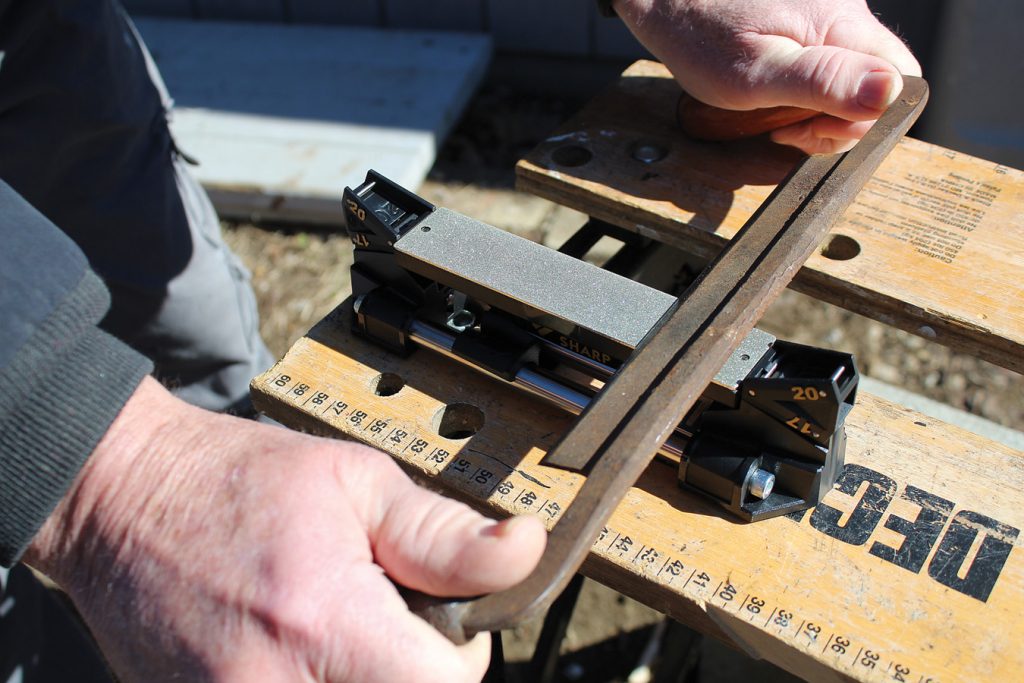
Sharpening a very old draw knife
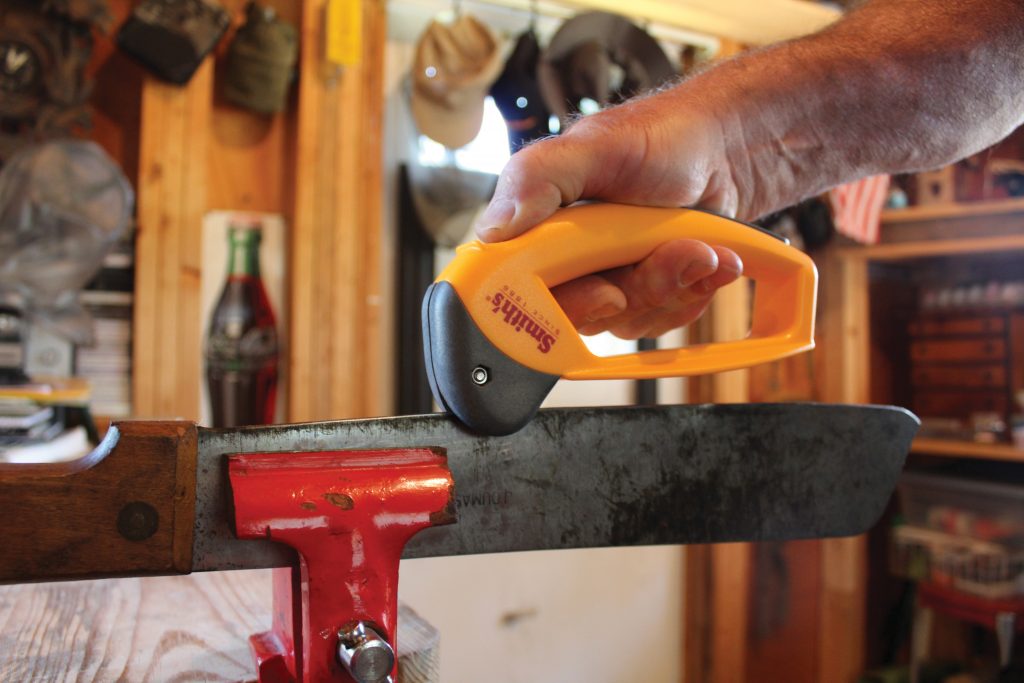
This tool allows me to touch up an edge quickly. With just a few passes I am done sharpening this 50-year-old, still functional, machete.
Shovels and hoes
Out of all my edged tools my shovels and hoes take the most abuse. Having a small 20- by 15-foot garden, I turn the soil every year by hand. That means constantly hitting rocks. Even after years of turning and working the soil, there never seems to be a shortage of rocks and it is even rumored that rocks are the number one crop of northern New England. With that said, the edges of my spades take a serious beating. Then there are the handles. How many of you are like me and use the shovel to pry out those big rocks? That is what they make crow bars for, but I’m often too lazy to walk back to the shed and get it. Instead, I use the spade. This puts a great deal of strain on the handle of a tool that was not meant for that job. For this reason, the handle of your shovel should be inspected both before and after you use it. Look for cracks and breaks. Most people just wrap the damage in tape and move on, but this is far from safe. If I notice serious damage, I will replace the handle.
While hoes don’t see the serious damage that a shovel does, they do need to be kept sharp if they are to do their job properly. A hoe is like the scalpel of the garden. If used properly, and if it is sharp, a hoe can swiftly remove weeds from the garden without damaging valuable plants. Despite my best efforts, I do come into contact with rocks while hoeing my garden, which translates into checking them often for damage and sharpness.
After every use I rinse and dry the tool. I then inspect it for blade integrity and damage. I check the edges for dings and nicks. Usually it is not too bad as these tools are tough and are meant to take some abuse, but occasionally there is a bend or roll in the blade that needs to be straightened out with a hammer.
If there is no damage then I put a light coat of oil on the blade to prevent rust and put the tool away until I need it again. If I have to fix any damage, I will sharpen the blade prior to putting it away. This process goes for both my shovels and hoes.
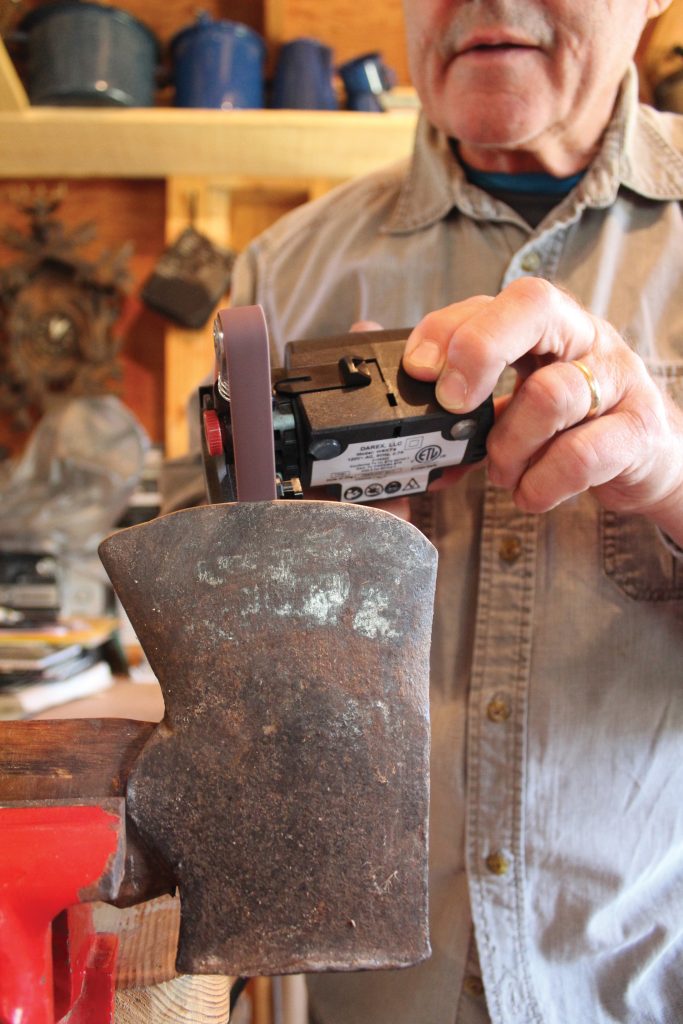
I prefer to hand sharpen all of my tools, but when an edge is in really rough shape, such as the one on this very old axe, I start the restoration with my belt sharpener.
Axes, mauls and drawknives
The edges of axes, mauls, drawknives, and machetes need to be extremely sharp if they are to do the job correctly and safely, so I tend to treat them more like knives. Before I use any of these tools, I first inspect the handles for any damage. Handle failure on any of these sharp tools can have very bad results. The last thing I want is for the head or the blade coming loose or flying off. If there is any significant damage, the handles are replaced.
The cutting edge of these tools is much more sensitive than it is on shovels and hoes, so more care needs to be given to them. After use, check the edges for any damage and address it. Once all issues have been addressed, re-check the edge for sharpness, oil it to prevent rust, and put it away.
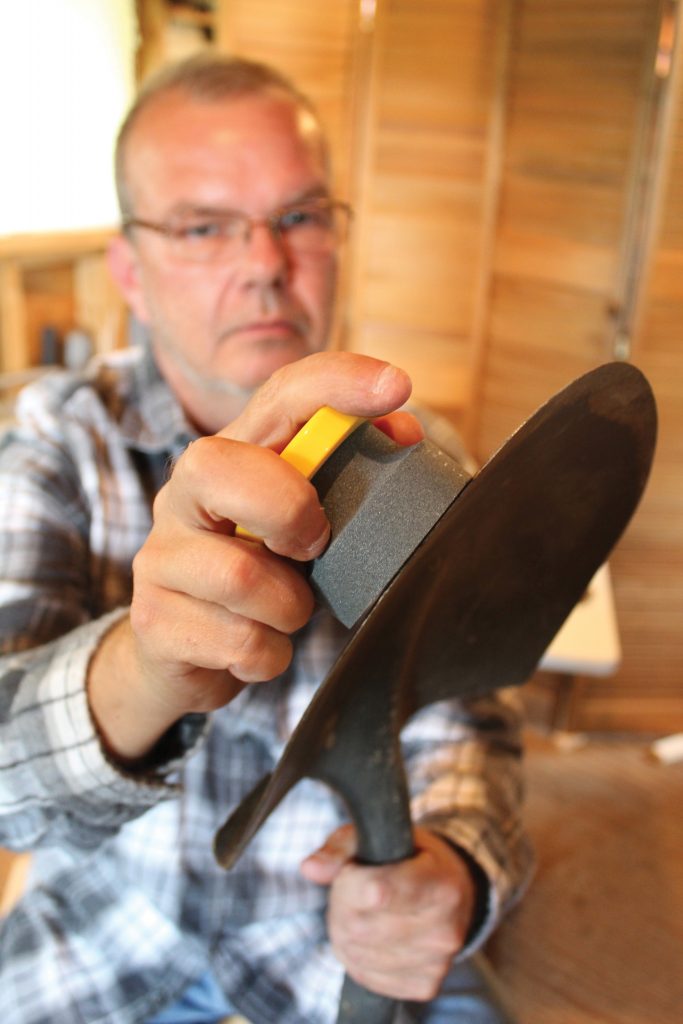
I like using a hand stone like this for maintaining the edges on most of my tools. This long handled spade has been in service for many years, and will last many more with good care.
Sharpening
Whether knives or shovels, I prefer to sharpen all edged tools by hand. I know people who use grinding wheels and belted sharpeners. I have been known to use electric belt sharpeners on badly damaged tools, but for the most part doing it all by hand gives me a direct connection to my tools.
For shovels and hoes, where the cutting edge doesn’t need to be as fine, I use a rough stone. Using a circular motion, I work one side and then the other, moving the stone left to right and then right to left. Depending on the tool this should only take five or ten minutes per tool.
For my axes, mauls, machetes, etc. how I start depends of what kind of shape the blade is in. If it is really rough then I may start with the belt sharpener to quickly knock off the rough spots. From there I will switch to a coarse hand sharpener, working my way down to fine. I will do this until I get the cutting edge I want. If the edge is in good shape, I skip the coarse stone and work strictly with the fine stones, basically just touching up the edge.
Keeping your tools in good shape is not difficult, but to do it correctly does take practice. Good tools will save you time and by maintaining the tools that you have will keep you from having to buy more. Over the years I have gotten pretty good at bringing tools back to life. I often have people bring me their edged tools so that I can “fix” them. Due to the care I show my tools, most of the hand tools I have in my shed have been with me for 30 years or more. Simply put, because I take care of them.


